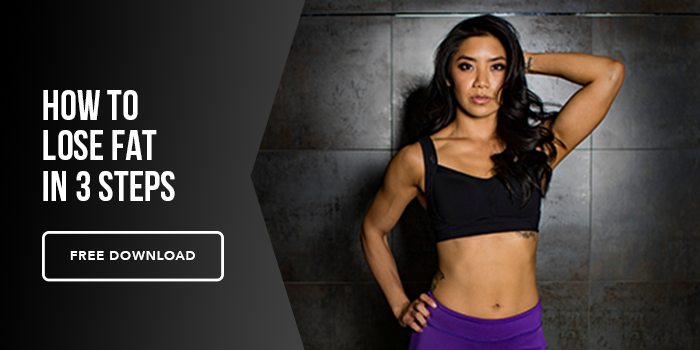Carb cycling is often marketed as a shortcut to fat loss—but let’s get one thing straight: it’s not magic. If you’re not in a calorie deficit, you won’t lose weight, no matter how well you time your carbs.
That said, carb cycling can be a useful tool for energy management, muscle maintenance, and diet adherence—if done right.
What Is Carb Cycling?
Carb cycling is a structured approach to carbohydrate intake where you alternate between high, moderate, and low-carb days based on your training schedule. The goal? Match your carb intake to your activity level—fueling performance when needed and managing energy balance more effectively on rest days.
A typical breakdown might look like this:
-
High-Carb Days (heavy lifting days): Maximizes glycogen stores for energy and recovery.
-
Moderate-Carb Days (moderate training/cardio days): Provides enough fuel without overloading on carbs.
-
Low-Carb Days (rest or light activity days): Encourages the body to rely more on fat stores for energy.
This structure allows you to adjust carb intake without completely eliminating them, which can make dieting more sustainable.
Carb Cycling: What It Does (And What It Doesn’t Do)
Carb cycling does not magically burn more fat. Carb cycling can help manage energy and performance. Higher fat oxidation does not mean more net fat loss. You burn more fat on low-carb days, but you also store more fat on high-carb days—it balances out. Carb cycling can help with diet adherence. Some people find that varying carb intake makes it easier to stick to a plan. You cannot “trick” your body into losing fat just by changing your carb intake. What matters most is still your overall calorie balance.
How Carb Cycling Can Support Fat Loss
- Better Energy Management – Aligning carb intake with workout intensity can help maintain performance and recovery.
- Psychological Benefits – The structured variation in carbs can reduce cravings and make dieting feel less restrictive.
- Improved Satiety on Low-Carb Days – Higher protein and fat intake on low-carb days can help control hunger.
- Potential for Better Muscle Retention – By keeping carbs high on training days, you support muscle glycogen and reduce the risk of muscle loss.
But remember:
- You don’t lose fat just because you have a low-carb day—you lose fat by being in a calorie deficit over time.
- Carb cycling won’t drastically speed up your metabolism or make your body burn more fat than a standard calorie deficit would.
Who Should Consider Carb Cycling?
Carb cycling isn’t essential for fat loss, but it can be useful for certain groups:
-
Athletes & Lifters – Supports muscle recovery and performance while keeping fat gain in check.
-
Those Hitting Fat Loss Plateaus – Can provide dietary variety without overhauling your approach.
-
People Who Struggle with Long-Term Low-Carb Diets – Allows for more flexibility and can help with adherence.
-
Anyone Who Prefers a Structured Diet Approach – If having set high- and low-carb days helps you stay on track, it’s a valid tool.
However, if you’re just starting out or don’t have a solid grasp on calorie balance, focus on nailing the basics first.
How to Implement Carb Cycling Properly
If you want to experiment with carb cycling, here’s a simple way to structure your intake:
-
High-Carb Days: Training days with intense lifting sessions. (50-60% carbs, 25-30% protein, 15-20% fat)
-
Moderate-Carb Days: Less intense training or cardio. (35-45% carbs, 30-35% protein, 20-25% fat)
-
Low-Carb Days: Rest or light activity days. (15-25% carbs, 40-50% protein, 30-40% fat)
Key Tips:
- Keep protein intake consistent across all days (muscle retention is the priority).
- Adjust fat intake inversely to carb intake (low-carb days = higher fat, and vice versa).
- Prioritize whole-food carb sources (rice, oats, potatoes, fruit) over processed sugars.
- Hydrate well – Low-carb days can cause water loss, so increase water intake.
- Listen to your body – If you’re constantly drained on low-carb days, adjust your intake.
Common Carb Cycling Mistakes
- Thinking Carb Cycling Itself Causes Fat Loss – It doesn’t. A calorie deficit does.
- Overeating on High-Carb Days – You can’t “carb load” your way out of bad energy balance.
- Dropping Calories Too Low on Low-Carb Days – Carb cycling is about shifting macros, not starving yourself.
- Not Timing Carbs Around Workouts – If you’re carb cycling, use carbs where they matter most: pre- and post-workout.
- Ignoring Protein Intake – Protein should stay high and consistent no matter the carb and fat variation.
Is Carb Cycling Worth It?
- For fat loss: It works if it helps you maintain a calorie deficit.
- For muscle retention: It supports training performance better than prolonged low-carb diets.
- For sustainability: Some find it easier to stick to than strict low-carb dieting.
- For overall health: Timing carbs around workouts can help energy and recovery.
But if tracking carb days feels overwhelming, a simple calorie deficit will still work just fine.
The Bottom Line
- Carb cycling alternates between high, moderate, and low-carb days.
- It can help manage energy levels, maintain performance, and support diet adherence.
- It does not automatically lead to fat loss—calorie balance is still king.
- Higher fat oxidation on low-carb days does not mean you burn more body fat overall.
- If cycling carbs helps you stay consistent, use it. If not, fat loss works just fine without it.
Carb cycling isn’t a cheat code—it’s just another way to structure your intake. What really matters? Calories in vs. calories out, weight training, and diet adherence.






